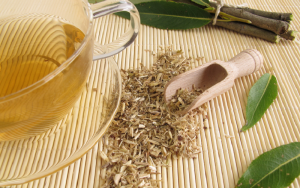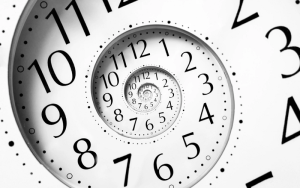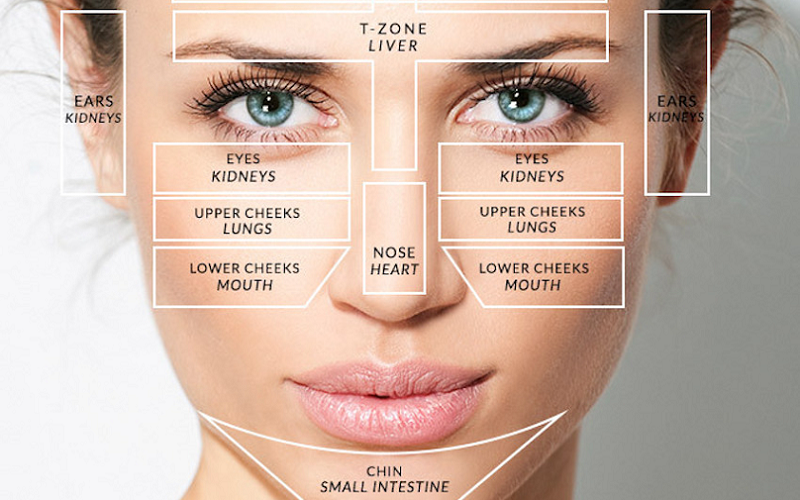
Face mapping — a practice deeply rooted in traditional Chinese and Ayurvedic medicine — offers unique insights into skin health and overall wellbeing. Face mapping, as the name suggests, is a holistic view of the face, which believes that different zones of our face are connected to various internal organs. The idea is that any disruption in these organs can manifest as skin issues in the corresponding facial zones.
Contents
Introduction to Face Mapping and Skincare
In the most basic terms, face mapping is a diagnostic tool that treats the skin as a mirror reflecting the health of our internal organs. It segments the face into different zones, each linked to specific organs or systems in the body. The belief is that disruptions in these organs or systems, caused by factors such as diet, stress, or toxins, can manifest as skin issues like acne, rashes, or discoloration in the corresponding facial zones.
Brief History and Origins of Face Mapping
Face mapping has deep historical roots, going back thousands of years. It originated in ancient China and India, where it was an integral part of traditional medicinal systems. In traditional Chinese medicine (TCM), face mapping is known as ‘Mien Shiang,’ which literally means ‘reading the face.’ Similarly, in Ayurveda, the ancient Indian medicinal system, face mapping is used as a diagnostic tool to identify imbalances in the body’s ‘doshas’ or energies [1].
Over time, face mapping traveled across continents, evolving and adapting to different cultures and medical practices. Today, it is used in various forms around the world, from Western dermatology to holistic health practices.
Importance and Relevance in Modern Skincare
The resurgence of face mapping in modern skincare might surprise some. But as we see a shift towards personalized and comprehensive approaches to health and skincare, it makes sense. The allure of face mapping lies in its holistic approach. It doesn’t just treat the symptoms (like a pimple or a wrinkle) but seeks to understand and address the underlying cause.
In a world where one-size-fits-all skincare products and routines are increasingly seen as insufficient, face mapping provides a personalized roadmap to better skin health. It encourages us to understand our skin, our body, and our lifestyle in a more integrated way.
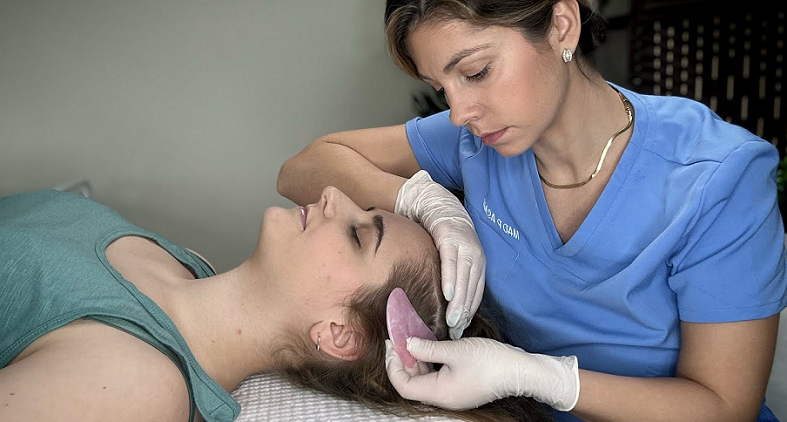
The Science Behind Face Mapping
While face mapping is an ancient practice, its principles are not entirely alien to contemporary scientific understanding. In fact, some aspects of face mapping align quite neatly with the modern medical model.
Understanding the Connection Between the Face and Internal Organs
In both traditional Chinese medicine and Ayurveda, the body is seen as an interconnected system, where a disruption in one part can impact the whole. The face, in this model, is a reflection of what’s happening inside the body. It’s like a map that can reveal health issues lurking beneath the surface.
For instance, according to face mapping, breakouts in the forehead area could indicate issues with digestion or detoxification, as this zone is linked to the bladder and intestines. Similarly, the cheeks are associated with the lungs and respiratory system, so issues like asthma, allergies, or smoking might manifest as redness, broken capillaries, or spots in this area [2].
It’s important to note that while these connections are not universally accepted by Western medicine, there is increasing interest in the systemic causes of skin issues, and the face’s role as a diagnostic tool.
Modern Research Backing Ancient Practices
Although face mapping is an age-old practice, modern research has started to shed light on the potential scientific basis of some of its principles. For example, there are studies linking gut health to skin conditions like acne, echoing the ancient belief of the connection between the digestive system and the skin.
Furthermore, dermatologists often observe that certain skin conditions like rosacea or discoid lupus erythematosus have specific facial distributions, which suggests that different facial zones may indeed have unique susceptibilities to certain conditions. However, it’s important to remember that this area of research is still developing, and more studies are needed to fully understand these links.
Debunking Myths Surrounding Face Mapping
While face mapping offers intriguing insights into skin health, it’s crucial to approach it with a balanced perspective. Some might interpret face mapping as a definitive diagnosis tool, which it is not. It should be used as a guide, a way to understand potential internal causes of skin issues, not as a substitute for medical advice.
Similarly, while face mapping can suggest lifestyle changes that might benefit skin health, it doesn’t mean that every skin issue is due to poor lifestyle choices. Genetic factors, hormonal changes, and environmental factors also play significant roles in skin health.

Different Traditions in Face Mapping
Just as the landscapes differ across the globe, so do the interpretations and applications of face mapping. From its roots in ancient China and India to its incorporation in modern Western dermatology, each tradition brings a unique perspective to this practice.
Chinese Face Mapping: Zones and Corresponding Organs
Chinese face mapping, or ‘Mien Shiang’, is a cornerstone of Traditional Chinese Medicine. It divides the face into several zones, each corresponding to specific organs or systems within the body. For instance, the forehead is linked to the digestive system, the cheeks to the lungs, the nose to the heart, and so on [3].
Practitioners of Chinese face mapping believe that signs such as redness, pimples, flaky skin, or dark circles in a particular facial zone can provide clues about the health of the related internal organs. For example, breakouts on the forehead might indicate digestive issues, while redness or sensitivity on the cheeks might suggest respiratory problems.
Ayurvedic Face Mapping: Tridoshas and Skin Health
In Ayurveda, face mapping takes on a slightly different perspective, rooted in the concept of the three ‘doshas’: Vata, Pitta, and Kapha. These doshas are energy types that govern physical and mental processes in the body.
Ayurvedic face mapping associates different parts of the face with various doshas. For example, the forehead, which is associated with the Vata dosha, is linked to the nervous system and intestines. The area around the nose and cheeks, related to the Pitta dosha, corresponds to the liver, stomach, and heart. The lower face, linked with the Kapha dosha, relates to the chest, lungs, and kidneys. Imbalances in these doshas may manifest as skin issues in the corresponding facial zones.
Western Interpretation: Dermatological Perspectives
Western medicine has traditionally been more focused on treating individual symptoms and conditions rather than looking at the body as an interconnected system. However, dermatologists do recognize that certain skin conditions can have specific patterns on the face. For example, rosacea commonly affects the cheeks and nose, while seborrheic dermatitis often appears on the forehead, around the nose, and behind the ears.
Moreover, with the growing interest in holistic health and wellness, some Western practitioners are starting to explore the broader connections between skin health and overall health. This includes considering aspects like diet, stress, and sleep, which have long been integral to face mapping traditions.
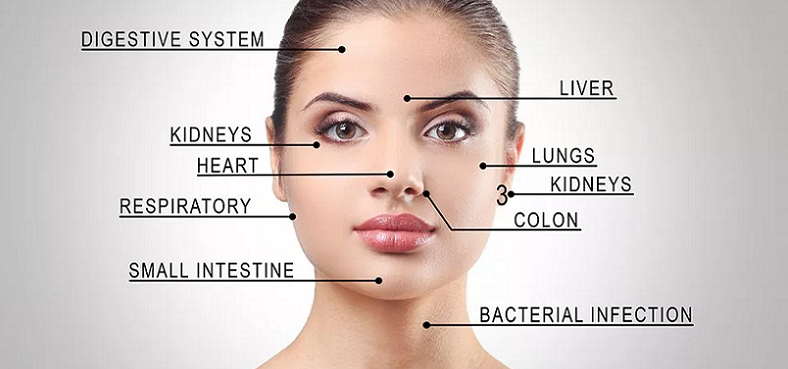
Understanding Common Skin Issues Through Face Mapping
One of the most practical applications of face mapping is its potential to give us insights into common skin issues. From acne to dark circles, face mapping can provide an interesting perspective on why these problems might be occurring and what internal imbalances they might be signaling.
Acne and Its Possible Causes According to Face Mapping
Acne, one of the most common skin conditions, can be particularly perplexing due to its seemingly random occurrence. However, face mapping may provide some insights. For example, in Chinese face mapping, acne on the forehead is linked to the digestive system, suggesting possible issues with diet or detoxification. Acne on the cheeks could indicate respiratory system issues, possibly related to smoking or allergies [4].
In Ayurvedic face mapping, acne could be seen as a sign of an imbalance in the Pitta dosha, which governs metabolism and inflammation. This imbalance could be caused by factors like eating spicy foods, exposure to sun, or emotional stress.
Remember, these are guidelines and not hard and fast rules. Other factors, such as hormonal imbalances, can also contribute to acne. Always consult a dermatologist if you’re struggling with persistent acne.
Dark Circles, Puffiness and Lines: What They Might Mean
Under-eye issues like dark circles, puffiness, and lines are common concerns and can be particularly telling in face mapping. The under-eye area is linked to the kidneys in Chinese face mapping, so issues here could suggest dehydration or an overworked renal system.
In Ayurveda, these signs could indicate an imbalance in the Vata dosha, which governs movement and circulation in the body. Factors like lack of sleep, stress, and a diet high in dry, cold, or raw foods can aggravate this dosha.
For puffiness specifically, it could also be a sign of poor lymphatic drainage, while lines and wrinkles could be natural signs of aging or, according to face mapping, possibly related to nutrient deficiencies or dehydration.
Rashes, Eczema, and Other Skin Conditions: Face Mapping Explanations
More complex skin conditions like rashes, eczema, or rosacea can also be explored through the lens of face mapping. In Chinese face mapping, for instance, a rash or redness on the cheeks could be linked to the lungs, suggesting issues like allergies or asthma.
In Ayurveda, skin conditions like eczema might be viewed as an imbalance in the Kapha dosha, which governs growth and hydration in the body. Factors like a diet high in sweet, sour, or salty foods, lack of exercise, or sleeping during the day can aggravate this dosha [5].
Applying Face Mapping to Your Skincare Routine
Face mapping is more than an interesting blend of ancient wisdom and modern science – it can also be a practical tool to guide your skincare routine. By understanding the links between different facial zones and internal organs or systems, you can tailor your skincare and lifestyle habits for improved skin health.
Observing and Understanding Your Skin
The first step in applying face mapping is to become an observer of your skin. Pay attention to where you commonly experience issues like acne, redness, dryness, or sensitivity. These patterns, according to face mapping, might provide clues about your internal health.
Next, try to understand what your skin might be telling you. For example, if you often have breakouts on your forehead, consider whether you might have issues related to digestion or detoxification, which are the areas linked to the forehead in face mapping.
Remember, this step is about observation and understanding, not self-diagnosis. Always consult with a healthcare provider or dermatologist if you have persistent skin issues.
Tailoring Your Skincare Regimen
With a better understanding of your skin, you can tailor your skincare regimen accordingly. For instance, if your skin issues are linked to a particular internal imbalance according to face mapping, you might want to choose skincare products that address these concerns.
Let’s say face mapping suggests your acne breakouts might be due to an overworked digestive system. In addition to topical acne treatments, you might consider incorporating skincare products with ingredients that support detoxification, like antioxidants.
Lifestyle Changes for Better Skin Health
Face mapping isn’t just about skincare products – it’s a holistic approach that includes lifestyle habits. The ancient practice encourages a healthy diet, regular exercise, sufficient sleep, and stress management for overall well-being, which naturally includes skin health.
If face mapping suggests your skin issues might be related to certain lifestyle factors, consider making some changes. For instance, if you have issues around your eye area, and face mapping suggests it might be related to kidney function, ensure you’re staying well-hydrated and limiting excessive caffeine and alcohol, which can dehydrate the body.
Regular Check-ins with Professionals
Lastly, while face mapping can provide valuable insights, it’s essential to maintain regular check-ins with skincare or healthcare professionals. Dermatologists, estheticians, and even traditional Chinese medicine practitioners or Ayurvedic doctors can provide guidance and treatments that complement your face mapping journey.
Face Mapping and Lifestyle Modifications
Beyond skincare products and routines, face mapping also extends into the realm of lifestyle modifications. Its holistic approach encourages us to see our skin not just as an isolated organ, but as part of our overall health and well-being. This perspective naturally leads to the consideration of lifestyle factors such as diet, stress management, sleep, and physical activity.
Dietary Adjustments for Skin Health
The ancient wisdom of face mapping places significant emphasis on diet as a key factor influencing skin health. For instance, Chinese face mapping often links digestive health to the condition of the forehead. If you’re experiencing issues like acne or oiliness in this zone, it could be a sign to evaluate your dietary habits.
Consider incorporating more antioxidant-rich fruits and vegetables into your meals, reducing intake of processed foods, and ensuring you’re getting enough fiber for healthy digestion. Hydration is also crucial for all bodily functions, including skin health, so make sure you’re drinking enough water.
The Role of Exercise
Regular physical activity is another crucial component of a healthy lifestyle, and it can also benefit your skin. Exercise helps improve circulation, which ensures that nutrients are efficiently delivered to your skin cells. It also promotes sweat, which can help clear out your pores.
In the context of face mapping, regular exercise can help maintain balance in the body and prevent issues that might otherwise manifest on your skin. For example, regular physical activity can support a healthy digestive system, potentially reducing skin issues linked to this system, like forehead acne.
Importance of Stress Management and Sleep
In both Chinese and Ayurvedic traditions, emotional well-being and rest are considered essential for overall health, including skin health. High stress levels and lack of sleep can disrupt various bodily functions and lead to imbalances that might show up on your skin.
According to face mapping, stress might particularly affect the areas of the face associated with the adrenal glands, like the chin. So if you’re noticing issues in these areas, it might be time to explore stress management techniques like meditation, yoga, or deep-breathing exercises.
Similarly, getting sufficient quality sleep is essential for your skin, which uses this rest time to repair and regenerate. Poor sleep can result in dull skin, dark circles, or even breakouts.
Reducing Exposure to Environmental Toxins
Lastly, face mapping encourages us to be mindful of our exposure to environmental toxins. This includes air pollution, which can cause oxidative stress on the skin, leading to issues like premature aging, sensitivity, and even acne. Protect your skin by using antioxidant-rich skincare products and considering air-purifying plants for your home or office.
Another common environmental toxin is excessive sunlight. While some sun exposure is necessary for vitamin D synthesis, too much can lead to skin damage, including sunburn, premature aging, and increased risk of skin cancer. Protect your skin by using a broad-spectrum sunscreen daily, even when it’s cloudy.
References
[1] The Ancient Art of Face Mapping
[2] Chinese Face Mapping: An Ancient Guide To Healing Your Face & Body
[3] Facial skin mapping: from single point bio-instrumental evaluation to continuous visualization of skin hydration
[4] Face Mapping & How It Indicates Your Overall Health
[5] Face Mapping Technology In Skin Care





